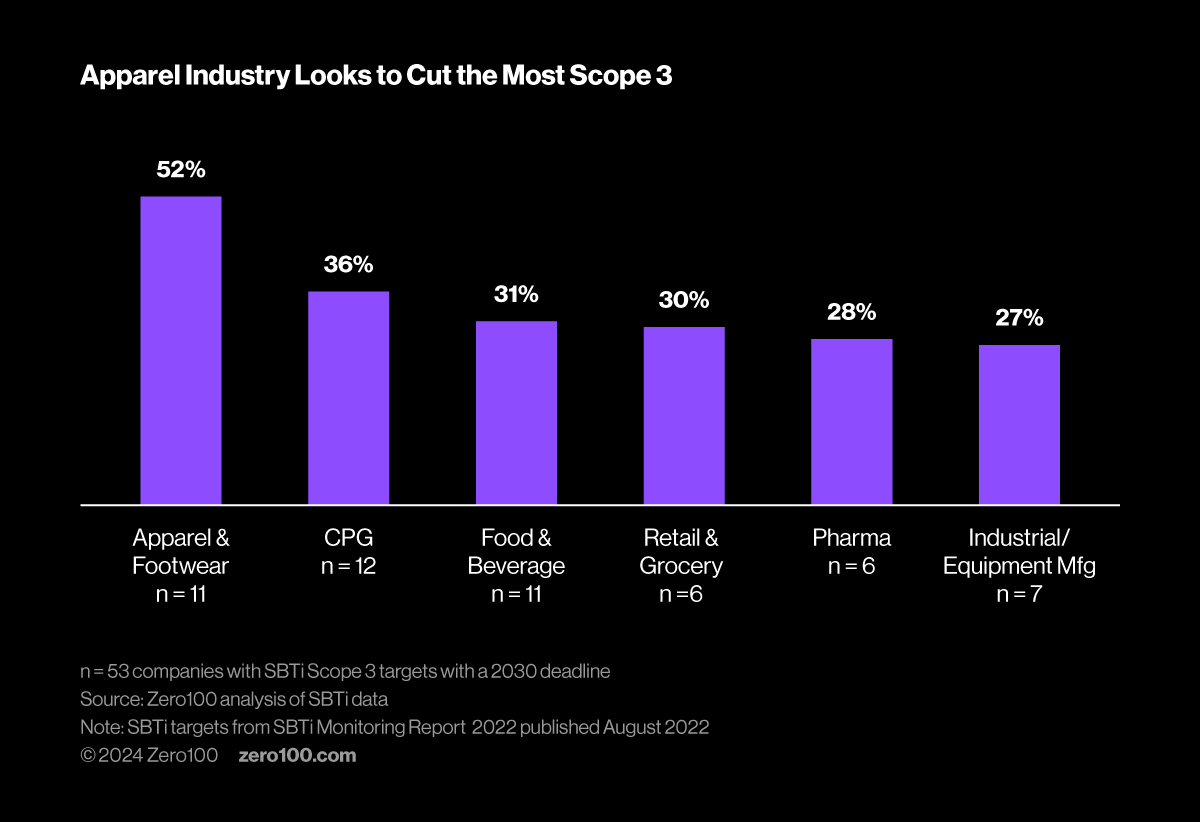

Apparel Industry Shoots High with Scope 3 SBTi Targets
Companies in the apparel industry (one of six industries classified as “high emitting” by the SBTi) are embracing innovative solutions – including improving material efficiency and biomaterials – to make progress towards their ambitious Scope 3 targets.
Key Takeaways
-
1
Of the companies in our data set with SBTi-verified Scope 3 emissions reduction goals with a 2030 deadline, the apparel industry aims the highest, setting targets 1.7x higher (52% reduction, on average) than the rest (30% reduction, on average).
-
2
Within the sourcing function, the apparel industry has ramped up investment significantly in two areas – material efficiency and biomaterials. From 2022-2023, apparel companies increased mentions of “material efficiency” in job posts by 214% and “biomaterials” by 209%.
Sourcing controls spend, has a front-row seat to supplier innovation, and is a business’s window to Scope 3. It is also the function responsible for the most carbon emissions – 33% – which are a mix of Scope 1, 2, and 3 (which includes all emissions linked to raw materials). All of this means sourcing is in a unique position to transform supply chains, particularly when it comes to ESG. There are many areas ripe for innovation within the function, which, if invested in, can positively impact progress towards achieving carbon targets.
Wasteful practices in the textile industry, particularly in fast fashion, account for up to 8% of global carbon emissions (a number which is projected to grow by more than 50% by 2030) and 9% of annual micro-plastic losses in the ocean. To address the high emissions from the apparel industry – one of six industries classified as “high emitting”– a specific set of standards and requirements are being developed by the Science Based Target Initiative (SBTi).
In line with being one of the industries responsible for the worst pollution, the apparel industry has set itself the highest Scope 3 reduction target for 2030, targeting a cut of over 20% more than the average of all other industries. Kerig, ASICS, lululemon, and Nike lead the charge with Scope 3 reduction targets of 60% or above. To reach these ambitious goals, apparel companies are embracing innovation, homing in on material efficiency and biomaterials (mentions of which increased in job listings by 214% and 209%, respectively, between 2022 and 2023).
Potential solutions in these realms include the creation and use of alternative materials, such as hemp, bamboo, and soy silk (among many others), which is already underway by a number of big-name brands, including Stella McCartney, Patagonia, and H&M. Own the Game, a sustainability initiative launched by Adidas, aims for 90% of articles to be made with environmentally preferred materials by 2025. A key project within the Own Game Initiative is replacing fossil-based plastics with plant-based raw materials. To accomplish this, Adidas has focused its recruiting on developing material efficiency capabilities, mentioning these keywords in 10% of sourcing role descriptions. One job post description for a Manager – Materials Development Apparel specifies, “lead all cross-functional discussions related to materials topics, steer the material selection process and drive material consolidation to improve material efficiency.” Separately, Adidas is one of the first large businesses in the sector to achieve material traceability at scale, gaining visibility across its end-to-end supply chain starting from the material level, through TrusTrace, a SaaS digital traceability platform.

While companies like Adidas are starting to invest in building out specific capabilities within sourcing, it is still under-leveraged and under-invested. Only 31% of companies are adjusting sourcing job descriptions to include keywords like “carbon accounting” and “decarbonization,” a number which should be higher.
Sustainability goals and the accountability to meet them are falling more and more to the sourcing function. In a recent Signal, Research Principal Lauren Acoba delved into the power and potential of sourcing, explaining that the days of pure procurement and focus on short-term gains are gone, replaced by partnership-driven relationship management. Five strategies she shares as a way to get started on your journey to 0-100 Sourcing include:
1) autonomous sourcing using AI,
2) regenerative supply,
3) proactive product lifecycle management (PLM),
4) co-innovation culture, and
5) traceability (like Adidas TrusTrace).
To drive growth and create a competitive advantage in performance and decarbonization, more companies, particularly those in the apparel industry, should turn up the heat on initiatives like those we mention, as well as invest in the above five strategies.
To see a different data cut or to dig deeper into this topic, reach out to our Head of Research Analytics, Cody Stack, at Cody.Stack@zero100.com.
Methodology
Zero100’s proprietary data and analytics are a combined effort between our data scientists and research analysts. We provide data-first insights matched with our own research-backed points of view and bring this analysis to life via real-world case examples being led by supply chain practitioners today.
Carbon breakdown by functional area: For this study, we used public carbon footprint and GHG emissions reports’ estimate of 51 billion tons of global CO2 released each year. Using data sources, including OECD, Our World in Data, and IEA, we created a segmented view as to how the 51 billion tons are dispersed throughout our supply chain networks. We aggregated ten different carbon emissions data sources to create a consensus view of emissions within each of the six supply chain functions (Source, Make, Move, Sell, Use, and Regenerate).
Job posts and SBTi data: For this study, we analyzed SBTi data from 177 B2B and B2C companies and 2.8 million LinkedIn job listings. Our analysis categorizes listings based on mentions of specific digital skills within job titles and descriptions.